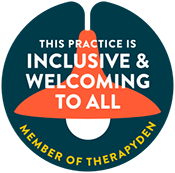For neurodivergent children—those with conditions like autism, ADHD, or sensory processing disorders—the world can feel overwhelming, with sensory overload, social challenges, and emotional regulation often posing daily hurdles. Emerging research highlights nature as a powerful ally in supporting their well-being, offering a calming, inclusive environment that fosters growth and resilience.
The Mental Health Cost of Cancel Culture

Cancel culture has become a prevalent topic in the digital realm.
Specifically, individuals are chastised or ostracized for their actions or options on a public scale. Accountability sets the foundation for emotional and mental growth, but the unyielding method of the cancel culture can be difficult on the psyche.
For those that are targeted the impact can be destructive. Enduring the act of being canceled out can lead to anxiety, depressive symptoms and in some extreme cases suicidal ideation can surface. The public scale of the criticism exacerbates the situation because the person is often subject to judgment from strangers and what’s posted on the internet leaves a permanent reminder.
Cancel culture can often influence the individual engaging in it as well.
The behavior of canceling can promote anxiety about one’s own possible mistakes. Moreover, this can form an atmosphere of individuals being fearful to convey their opinion. Also, the anger displayed within the cancel culture can often trigger emotional burnout and cynicism.
Social media fosters an environment that rewards negative behaviors versus constructive conversations. The anonymity of the online platform creates mob behavior thus increasing ill-thought decision-making and decreasing empathy for others.
To decrease mental health costs there needs to be an online refocus to conversations that are conducted respectfully and hold individuals accountable without harsh punishment. Additionally, conversations should shift to a willingness to improve and provide individuals with redemption and forgiveness versus fostering an atmosphere of fear or defensiveness, then labeling them as permanently bad.
Follow us for more wellness content!
More Blog Posts
In crisis or need immediate help?
Call 988 or go to your nearest ER.
Services
Adolescent Psychotherapy
Adult Psychotherapy
Assessments & Evaluation
Child Psychotherapy
Cognitive Behavioral Therapy
Couples Therapy
Family Therapy & Parent Coaching
Genetic Testing
Group Therapy
Medication Management
Play Therapy
Single-Session Therapy
Teletherapy
Orchard Mental Health Group
Accepted Insurance*
Aetna
Carefirst / Blue Cross Blue Shield
Cigna
Humana / Tricare
Johns Hopkins Health Plans
Medicaid
Medicare
Optum / UnitedHealthcare
*Varies by service
Partner Resources
Contact Us
M-F, 9am-5pm Eastern Time
Phone: 240-750-6467
Fax: 240-912-7835
contact@orchardmentalhealth.com
9707 Key West Avenue, Suite #100 Rockville, MD 20850









